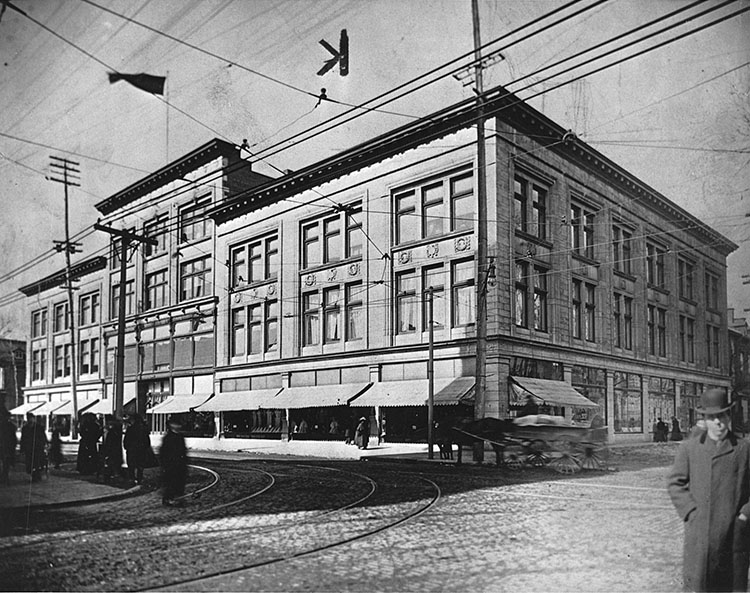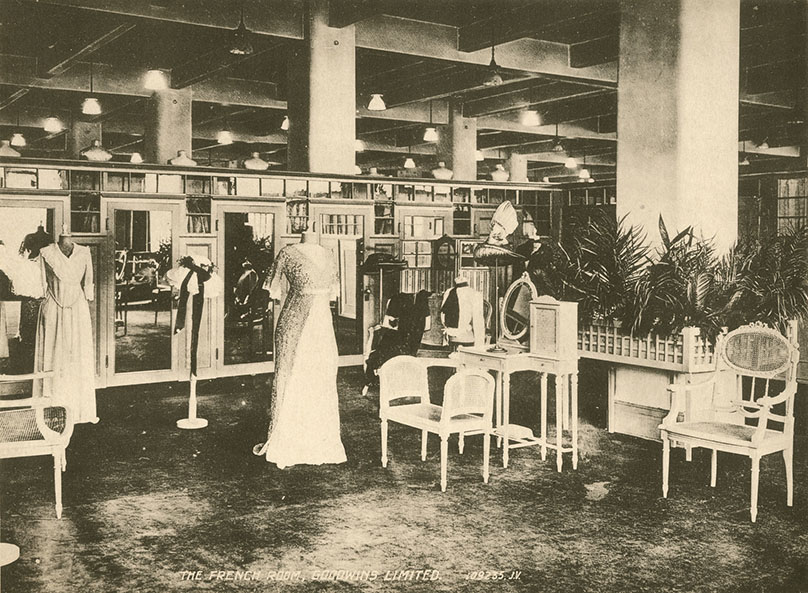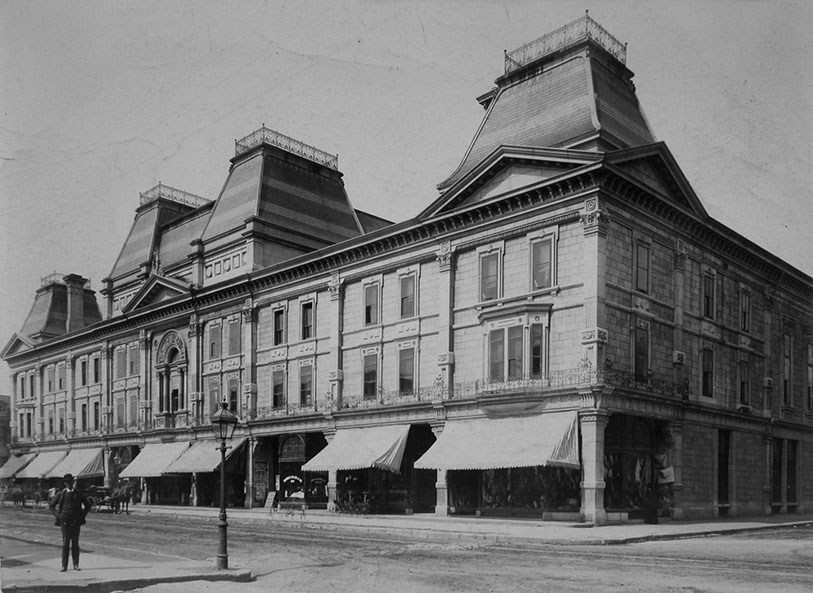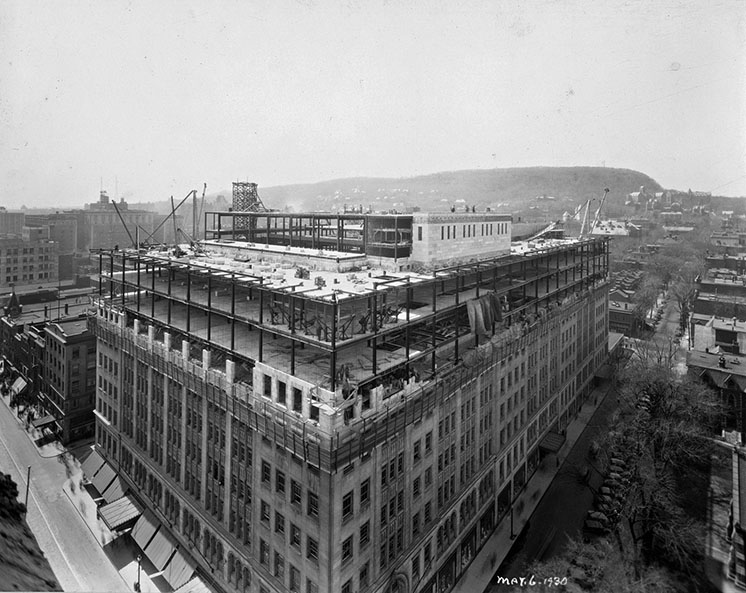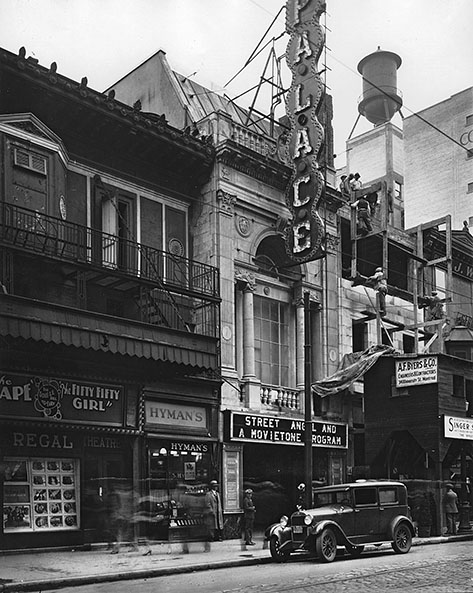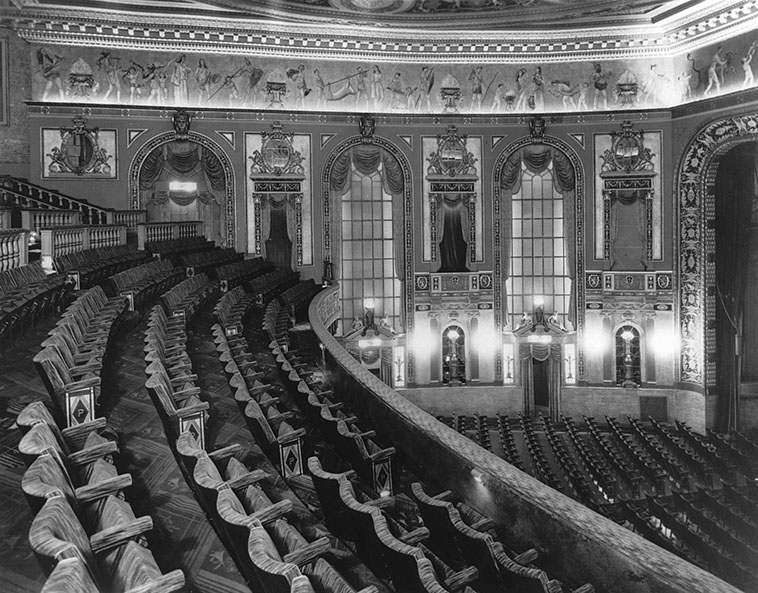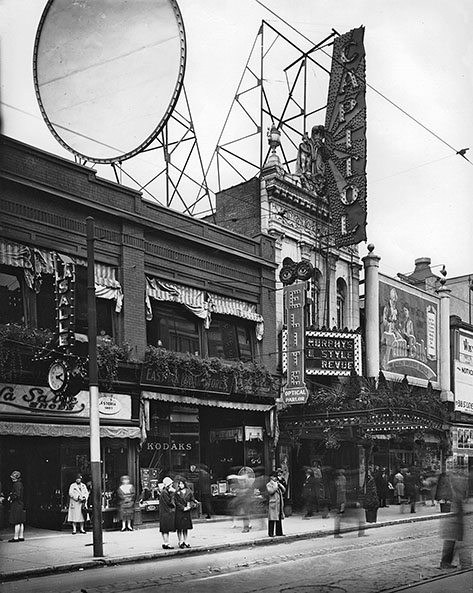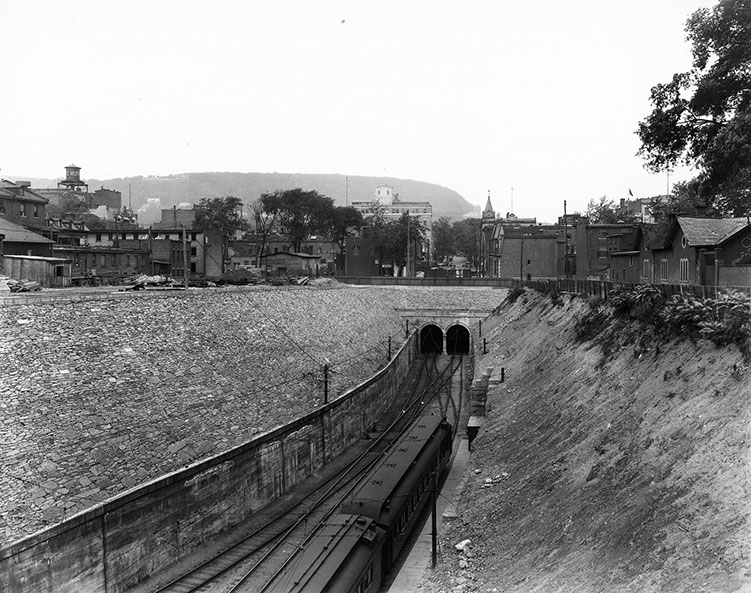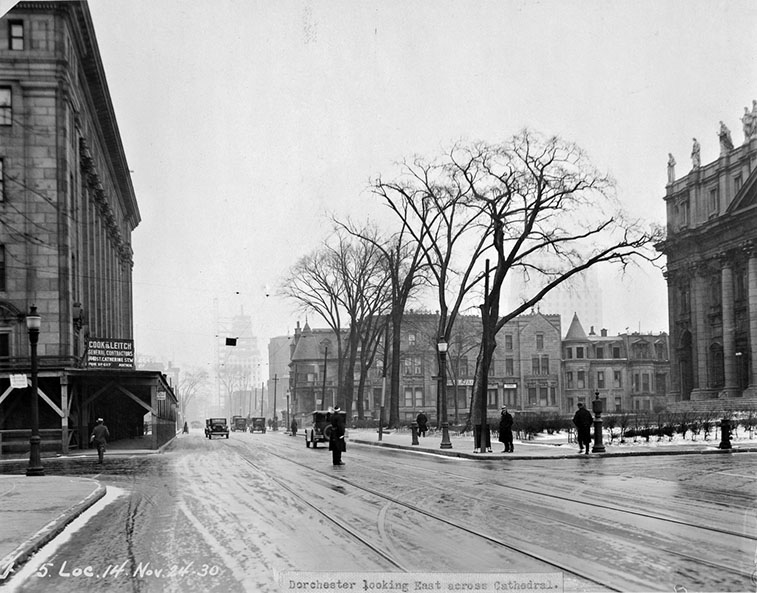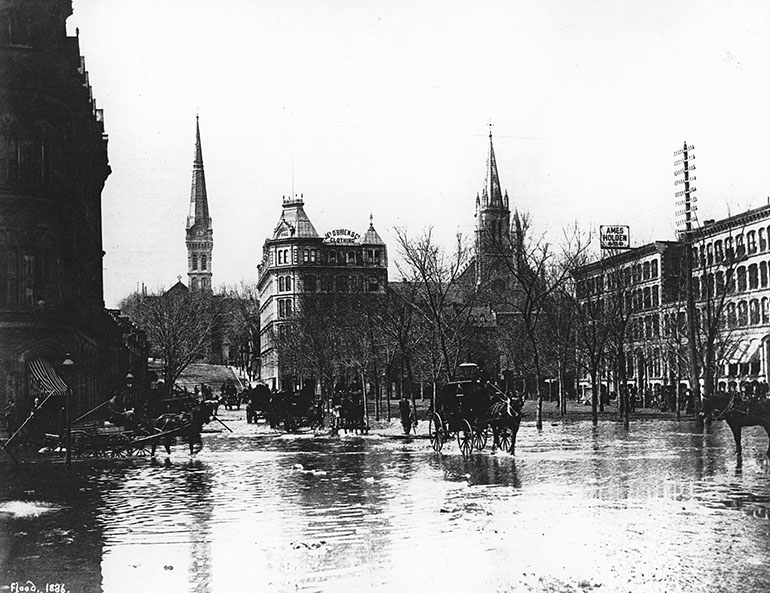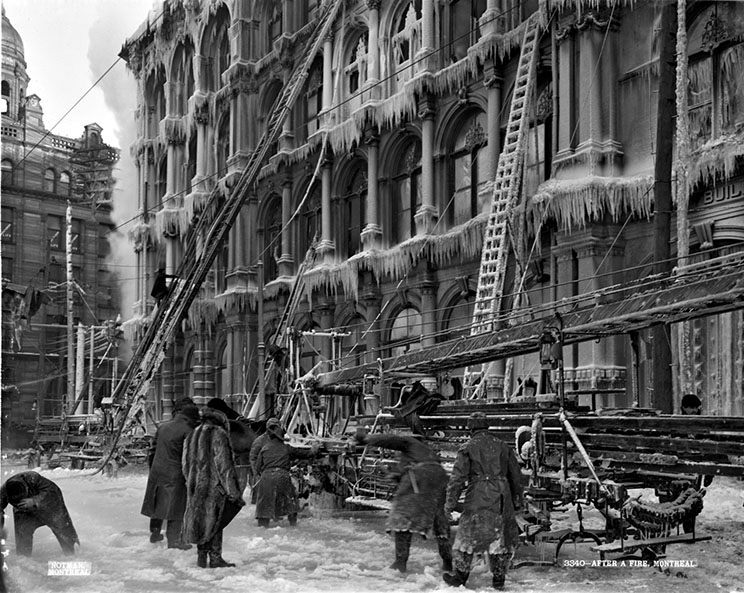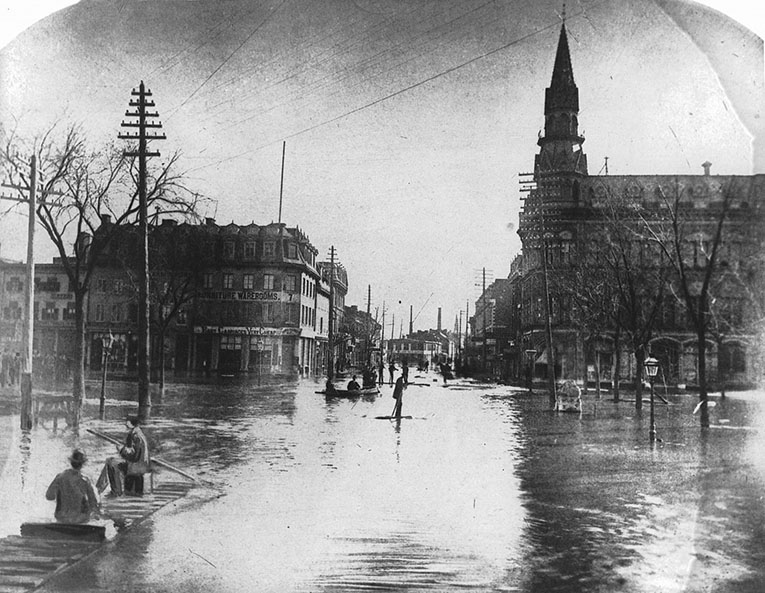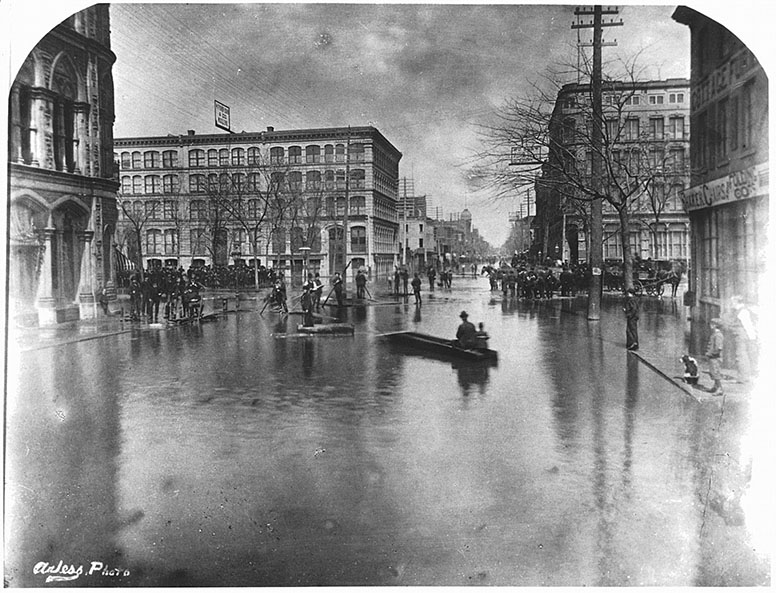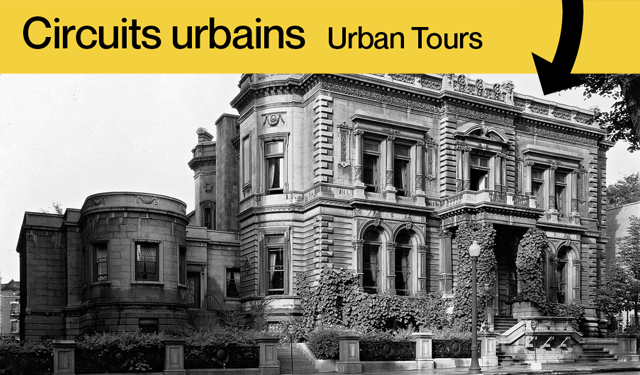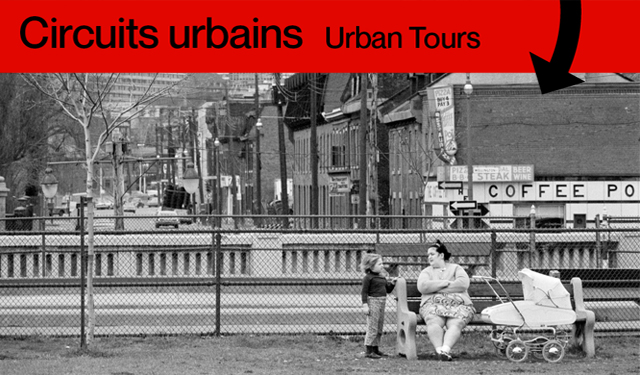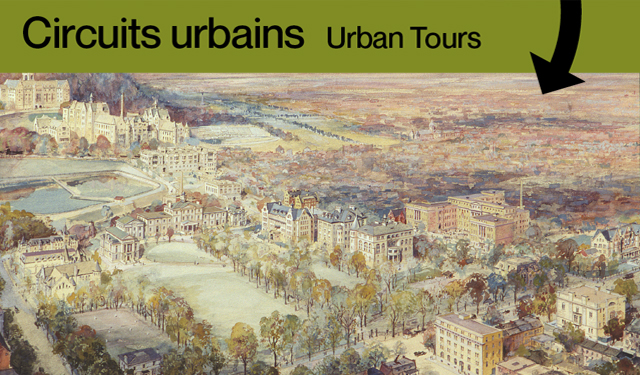Downtown and Old Montreal
History at your fingertips! The Urban Tours provide a fun way to learn more about the history of certain Montreal sites.
June 18, 2024
Take an exclusive outdoor tour thanks to historical images from the Museum’s collections.
Using your phone, explore the various tours and discover the history of many city sites and images that bear witness to the Montreal of the past.
The McCord Stewart Museum‘s Urban Tours offer a unique opportunity to discover the history of Montreal landmarks.
The Downtown and Old Montreal tour takes you through a section of downtown and Old Montreal as you explore the past of iconic department stores, theatres and buildings.
1. GOODWIN’S DEPARTMENT STORE
This block of St. Catherine Street has a very busy commercial history. In the 1880s and 1890s, it housed a concert hall that seated up to 1159 people so it was known as Queen’s Hall Block. G. A. Brouillet’s “fancy and staple dry goods” first rented the space at 1301 Sainte Catherine (on the right corner of the building). W. H. Scroggie took over and gradually expanded Brouillet’s dry goods business. In 1899, this building partially collapsed, and was demolished.
Another building was constructed, housing first Scroggie’s, then in quick succession Carsley’s, and Rea’s department stores, before becoming Goodwin’s. The building was an engineering marvel. Supported by steel framework, its floors were spacious. Electricity provided the lighting and powered elevators and escalators. Pneumatic tubes carried messages and payments between departments.
In 1925, the T. Eaton Company purchased Goodwin’s department store, and over a two-year period, renovated the façade and expanded the building to six storeys, with the work done in sections in order to keep the store open to customers. This last photograph shows the further construction of the top floors of the building, including the 9th floor restaurant in 1930.
Ivanhoé Cambridge acquired the building in 1999.
2. REGAL AND PALACE THEATRES
When cinema arrived in Montreal, it was an immediate success with the general public and led to the construction of multiple movie theatres to meet the huge demand for entertainment.
Built in 1921, the Palace Theatre was originally called the Allen Theatre. It became the Palace when it was redecorated in 1928 and was remarkable for its huge marquee that boasted 2000 bulbs.
3. CAPITOL THEATRE
The Capitol Theatre opened in 1921 and could accommodate 2600 spectators. The building was demolished in 1973. Place Montreal Trust was constructed in the 1980s by a consortium of the architects Eberhard & Eidler, Zeidler Partnership Architects and Erol Argun. It features the tallest indoor fountain in North America.
4. C.N.R. TUNNEL UNDER MOUNT ROYAL
Real estate developer W. Zeckendorf hired architects I.M. Pei and Henry N. Cobb to design Place Ville Marie, which was built between 1958 and 1962 above the railway trench leading into CN’s Central Station. A true architectural gem, the 46-storey building cost $80 million and was initially Montreal’s tallest downtown skyscraper. Its official opening on September 13, 1962, attracted over 1500 guests to a concert by jazz pianist Oscar Peterson.
5. DORCHSTER STREET, LOOKING EAST FROM METCALFE STREET
The Plaza Rooms building in the middle of the picture, whose sign can be seen through the trees, was a rooming house. One of the houses further south on Mansfield Street was used as CN office space. Both buildings were replaced by the Fairmont The Queen Elizabeth hotel, which opened in 1958. Owned by Ivanhoé Cambridge, the iconic hotel underwent a major transformation and reopened in the summer of 2017.
6. FLOOD IN VICTORIA SQUARE
Old Montreal was hit by serious flooding in 1861, 1869 and especially 1886, when it suffered the worst floods of the 19th century, with the water rising as high as Victoria Square and the foot of Beaver Hall Hill. The commercial buildings on the east side of Victoria Square have since been replaced by the Édifice Jacques-Parizeau, which was erected above the Ville Marie Expressway and the metro and spans St. Alexandre Street. Édifice Jacques-Parizeau houses the main business office of the Caisse de dépôt et placement du Québec and the corporate headquarters of Ivanhoé Cambridge, one of the Caisse’s real estate subsidiaries.
7. THOMAS MAY’S BUILDING AFTER A FIRE
Many Canadian cities experienced major fires in the 19th century and Montreal was not spared. The Montreal Fire Department wasn’t founded until 1863.
8. Y.M.C.A. BUILDING, VICTORIA SQUARE
The first Young Men’s Christian Association in North America was established in Montreal in 1851. In 1873, a four-storey building (right side of the image) was built overlooking Victoria Square.
9. FLOOD IN VICTORIA SQUARE
Montreal was repeatedly hit by flooding in the 19th century. One of the most devastating floods occurred in 1886. The building on the far side of Victoria Square, on the northeast corner, was then occupied by the woollen goods manufacturer M. Fisher Sons & Co. Once home to the Bank of Canada, it is now occupied by the very upscale W Montréal Hotel.

